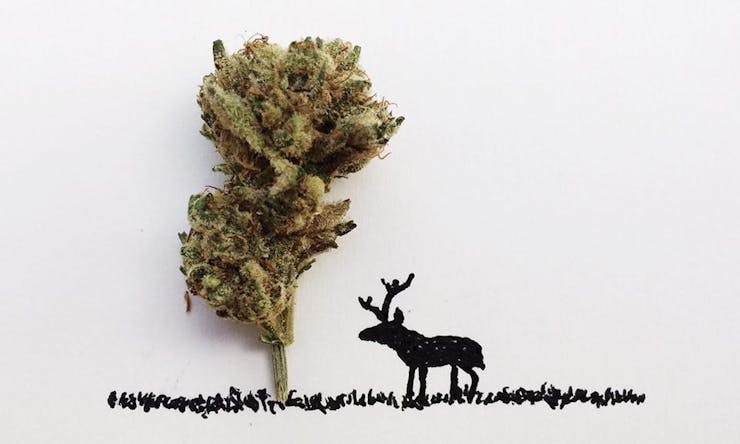For many of us, creativity and cannabis walk hand-in-hand. A nice, uplifting sativa may be all you need to clear the mental logjam of writer’s block or to bring a fresh pair of eyes to your art. Abstractly, marijuana seems to give rise to new avenues of thought and insight, and this phenomenon has been recognized by revered, brilliant minds like that of Carl Sagan and Steve Jobs.
However, a study published in Psychopharmacology will tell you that the creative burst you’re feeling is just an illusion. Allow us to explain.
Researchers in the Netherlands administered vaporized cannabis in three different amounts to 53 participants who were self-reported regular consumers. One group received a low dose of THC (5 mg), another was administered a higher dose (22 mg), and the last group was given a placebo. The subjects’ cognitive performances were then measured using two different exams: one that measured creative, divergent thinking while the other measured convergent thinking, or one’s ability to arrive at a single solution for a well-defined problem. Interestingly, there was little difference in scores among each group for the convergent thinking test.
The divergent test consisted of inventing various uses for common household items, supposedly demonstrating different cognitive skills associated with creativity. A point-based system was used to score three performance markers: fluency, or the number of responses provided; flexibility, or the variation in answers; originality, or the response’s uniqueness compared to those of other participants; and elaboration, or the amount of detail provided in explaining a response.
As shown by the chart below, larger doses of THC correlated with worse performance on this creative task, while researchers noted that small doses and placebo were comparable. Interestingly, there seems to be no mention of how subjects would perform had they been knowingly sober for the exam. Furthermore, how did each individual’s sober performance compare to his or her stoned performance? This chart shows average results for each category, but did individual variation skew the results?

While this study is thorough in its consideration of participants’ moods and anxiety levels, it seems to neglect a myriad of head-spinning complexities. The definition of creativity here is restricted to a single cognitive task which took place in an unnatural environment under unnatural conditions. But what if you were in the comfort of your home exercising creativity in the ways most conducive to enjoyment and emotional expression? What if you instead vaporized a stimulating sativa like Island Sweet Skunk, and how would that differ from a sleepyindica like Romulan? And how does tolerance, anxiety, and other aspects of brain chemistry affect our creative output under the influence of cannabis?
It seems this study raises more questions than it answers, but perhaps this framework will give rise to more refined explorations of cannabis and creativity. In the end, we have to wonder if creativity will ever be something we can measure empirically, or if it is indeed a personal matter rooted in a tangle of biopsychological nuances. For now, we’ll leave it up to you.
Chart retrieved from Springer.com





